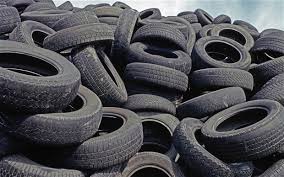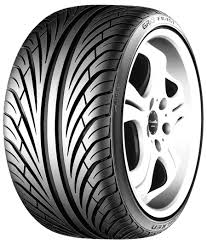It is a curious quirk of Irish car buying habits that while we are prepared to spend many a thousand Euro extra on such items as leather seats or a more kick-ass stereo, we will expend next to nothing extra when it comes to safety. It’s a perennial problem. A decade ago, before EU law made them mandatory, few Irish car buyers would spend extra money on anti-lock brakes. They (we, really) preferred to spend cash on items they (again, we…) could see and touch. A sunroof. Nicer alloys. The pattern was more recently repeated with electronic stability control.
And of course, there are tyres. If not paying attention to your tyres were an Olympic discipline, Irish athletes would be groaning under the weight of surplus gold. Not only do we habitually ignore warnings to check our pressures, our tread depth or the overall health of our tyres, it seems we are still far too keen on saving money on their purchase to the detriment of safety.
Second-hand or part-worn tyres
Speaking at a Continental Tyres media briefing, Tom Dennigan of Continental Tyres Ireland said: "By our reckoning, the replacement tyre market in any country can normally be estimated by assuming one tyre purchase per year per car. However, the unregulated sale of second-hand or part-worn tyres is accounting for a larger section of the market than previously thought.
"For several reasons, we would advise motorists not to consider fitting part-worn tyres, not least because there is no way to know what hidden damage may have been caused to the tyre in its previous life. In this regard, experts in the UK have pointed out that the majority of tyres that are offered for sale as part-worn, are tyres that have come from 'End of Life Vehicles' (ELVs) - cars and vans that have been involved in accidents. Ask yourself, would you be happy letting the safety of your family depend on tyres that may previously have been on a vehicle involved in an accident, or perhaps even written off.”
Mr Dennigan warned that Irish motorists should also be aware that a lot of the tyres that are sold as part-worn are winter tyres from European countries and that if these tyres are put on the same axle as the existing standard tyre, the car will automatically fail the NCT as the Road Safety Authority has ruled that winter and summer tyres can not be mixed across the one axle.
“It’s frightening” said Mr Dennigan. “This has been going on for years. Anecdotally, many of the key players in the tyre processing and recycling business in Ireland, have told me that they don’t collect very many tyres from end of life vehicles. In fact the number is close to zero.”
Regulation and Standard
 Mr Dennigan was adamant that the second hand and part worn tyre industry needs closer scrutiny and regulation. “We’ve never really looked properly at this part of the market, but it has the potential to be incredibly dangerous. There is no standard, there are no tests, no regulated government or industry test to say whether a tyre meets a certain standard or a tyre is safe or unsafe. In the UK there are standards, and there is independent testing of tyres and indeed independent badging of tyres, so that once a tyre has passed these tests, it’s clearly marked as a part-worn tyre and is identifiable to the consumer, but none of that applies here. Our issue is not with the use of second hand tyres, because we all essentially drive on second hand tyres, once they’ve been on your car for a day, the issue is one of standards and regulation and the industry.”
Mr Dennigan was adamant that the second hand and part worn tyre industry needs closer scrutiny and regulation. “We’ve never really looked properly at this part of the market, but it has the potential to be incredibly dangerous. There is no standard, there are no tests, no regulated government or industry test to say whether a tyre meets a certain standard or a tyre is safe or unsafe. In the UK there are standards, and there is independent testing of tyres and indeed independent badging of tyres, so that once a tyre has passed these tests, it’s clearly marked as a part-worn tyre and is identifiable to the consumer, but none of that applies here. Our issue is not with the use of second hand tyres, because we all essentially drive on second hand tyres, once they’ve been on your car for a day, the issue is one of standards and regulation and the industry.”
That’s an interesting final point actually, isn’t it? Every time we buy a second hand car, (and there were more than half-a-million second hand car sales in the first half of this year, dwarfing by a factor of ten the number of new car sales) we are effectively driving away on second hand tyres, putting our trust in the vendor that they have checked and cared for these four slender black circles – our only hope of keeping the car under control.
I wonder how many of is actually look, really look, at the tyres of a car we’re considering buying. Fair enough, if you’re buying from a reputable dealer, you might reasonably expect that they have done this job for you, but what about a smaller dealer or a private sale?
 It be wise, indeed potentially life-saving, to give more than a cursory glance at the tread-depth which I suspect is the limit of most of our tyre-inspections. Are the tyres all of a matching brand? Are they all summer or winter tyres? Do they all have a matching speed rating and sidewall size?
It be wise, indeed potentially life-saving, to give more than a cursory glance at the tread-depth which I suspect is the limit of most of our tyre-inspections. Are the tyres all of a matching brand? Are they all summer or winter tyres? Do they all have a matching speed rating and sidewall size?
Not only is this good from a safety point of view, it’s also a pretty good tell-tale from a sales point of view. Just as the staff at a swanky restaurant will check your shoes and watch before deciding whether or not you’re worthy of a table, so a set of matching, good-condition tyres would at the very least suggest that the owner of the car you’re about to hand over a cheque for has taken decent care of it to this point. It’s not a bad idea for those looking to sell or trade-in to invest in a decent set of boots too – if it helps with the appearance, it’ll help with the sale too.